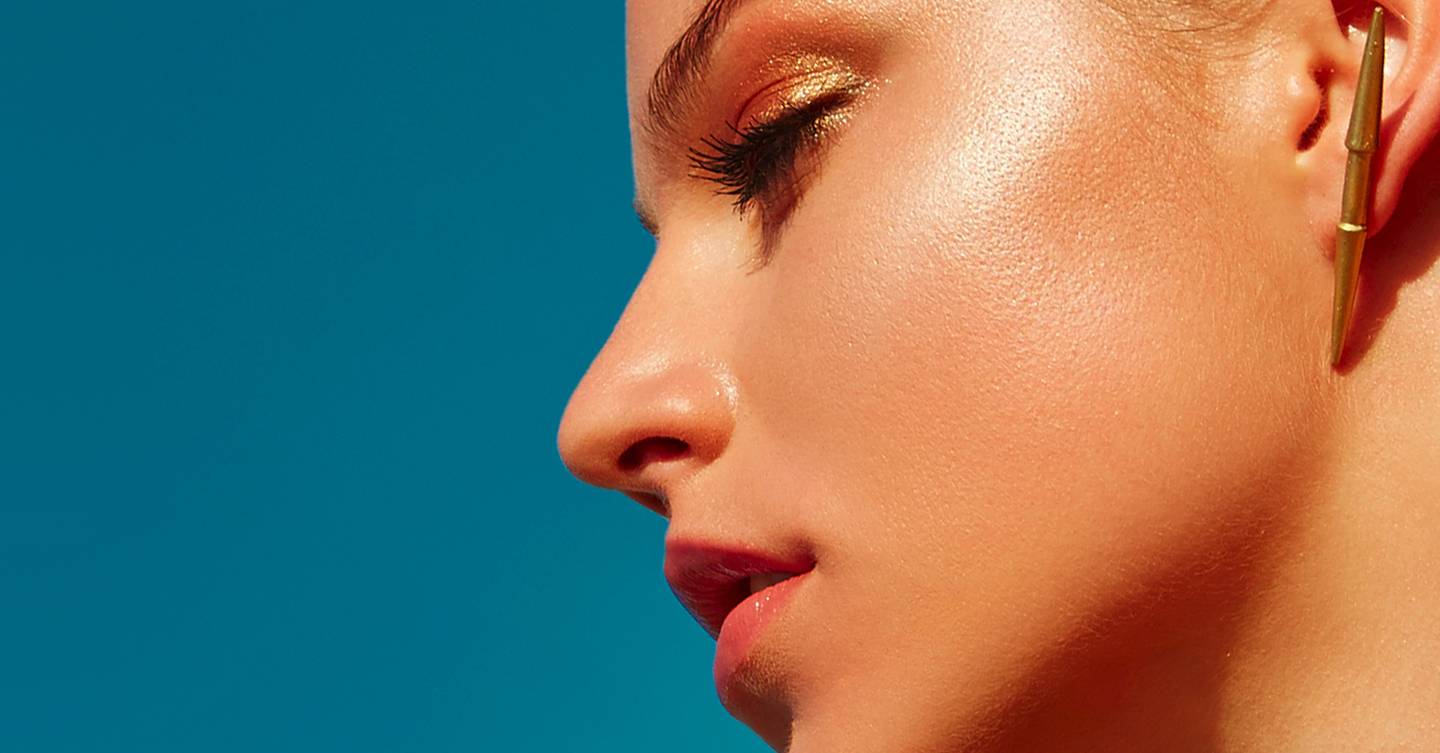If you’ve spent any time in the sun throughout your life, you may have developed some sun spots on your face. These spots (also called age spots, liver spots, or solar lentigines) appear as flat, smooth brown spots on areas of your skin that tend to get a lot of sun exposure.
Sun spots are generally harmless areas of pigmented skin, but they can be easily confused with other types of sun-related spots on the skin, including some that may actually be a sign of skin cancer. If you think you have sun spots on your face, it’s important to monitor them and to get anything that looks iffy checked out by a board-certified dermatologist.
Here’s what you need to know about sun spots, how to prevent them, how dermatologists can treat or remove them, and signs to look for that may signal an issue.
What causes sun spots on your face?
Sun spots on your face are a type of hyperpigmentation caused by UV exposure. Essentially, after being exposed to the sun, your skin increases production of melanin, the pigment that gives skin colour. Over time, some areas of your skin may develop clumps of melanin or may overproduce that pigment, resulting in a sun spot, the Mayo Clinic explains.
These types of spots tend to show up on areas of your body where you get the most sun, which might include your face, shoulders, hands, chest, and the back of your hands, Mary L. Stevenson, M.D., assistant professor in the Ronald O. Perelman Department of Dermatology at NYU Langone Health, tells SELF. Sun spots tend to be flat rather than raised, are usually brown, and may appear in clusters.
What’s the best way to prevent sun spots?
The best way to prevent sun spots on your face is to develop and maintain solid sun safety habits. “They can be prevented with diligent sun protection including use of sunscreen on regular basis, and other forms of sun protection like hats, sun glasses, and clothing,” Nada Elbuluk, M.D., clinical assistant professor of dermatology (clinician educator), Keck School of Medicine of USC, tells SELF.
That includes using broad spectrum sunscreen (SPF 30 or higher) every day, particularly on areas of your body that are prone to sun exposure, like your face, your shoulders, and the back of your hands. Sun spots are more likely to show up on people with lighter skin, Elbuluk says, but people with darker skin tones can still develop sun-related skin damage, so it’s important for everyone to wear sunscreen regularly.

Shutterstock
But we know that it’s a bit difficult to stick to diligent sunscreen wearing (and reapplication) habits—and even perfect sunscreen usage doesn’t protect you from 100% of the sun’s rays. That’s why it’s crucial to also use other sun protection strategies, like wearing sun-protective clothing, sticking to the shade whenever possible, and wearing hats and sunglasses that block the sun.
Products to try:
What’s the best way to treat sun spots?
True sun spots are not harmful and don’t need to be treated. If you do decide you want to have your sun spots treated or removed for cosmetic reasons, this is something you’ll likely have to see a professional about. Although you can certainly try some products containing the classic brightening ingredients, like hydroquinone, retinoids, or vitamin C, “over-the-counter products are typically not strong enough to have a significant effect on sun spots,” Elbuluk explains.
Although some of those products can be helpful in preventing sun spots and generally evening out your skin tone, they aren’t likely to be enough once you have the spots, Stevenson says. So if you want to have a sun spot removed, you’ll need to talk to a board-certified dermatologist. They may recommend using a prescription-strength lightening cream or procedures such as professional chemical peels or laser treatments, Stevenson says.
After a laser treatment, the spot will usually “turn a little white, crust, and then peel off,” Stevenson explains, so that you’re left with a subtly pink area that eventually fades. After doing all that work to have the spot removed, it’s really important to keep it from getting any more sun, she says, especially while it’s still healing, because laser treatments can make your skin more sensitive to sun exposure. In fact, Stevenson says she generally doesn’t treat sun spots during the summer because of this risk for more pigmentation after treatment.
However, sometimes other types of spots (called seborrheic keratoses) are confused with sun spots, Stevenson says. Seborrheic keratoses, like sun spots, are harmless brown, tan, or black growths on the skin, the Mayo Clinic explains. However, unlike true sun spots, these marks tend to be slightly raised, which means they may need to be shaved down or destroyed with electrocautery. These procedures may then be combined with laser treatments to further remove the pigment. Many people who are prone to sun spots are also prone to seborrheic keratoses, so it’s common to have both Stevenson says.
Hyperpigmentation on the face might also be melasma, a condition that tends to appear in patches on the cheeks, forehead, nose, or chin, SELF explained previously.
When should you talk to a dermatologist?
Although true sun spots aren’t harmful, they are a result of sun damage and therefore can be a sign that you need to get better at protecting yourself from sun exposure.
Sometimes, cancerous spots on your skin can look like sun spots or seborrheic keratoses, the Mayo Clinic says. So if you have a lot of sun spots or you notice one that looks suspicious or odd, it’s always a good idea to get checked out by a dermatologist.
In particular, it’s important to take note of any spots that seem to be growing or changing rapidly. “If [you have] a brown spot that seems to be changing in size, colour, or appearance, then it may not be a sun spot and should be examined by a board-certified dermatologist to rule out skin cancer,” Elbuluk says.
